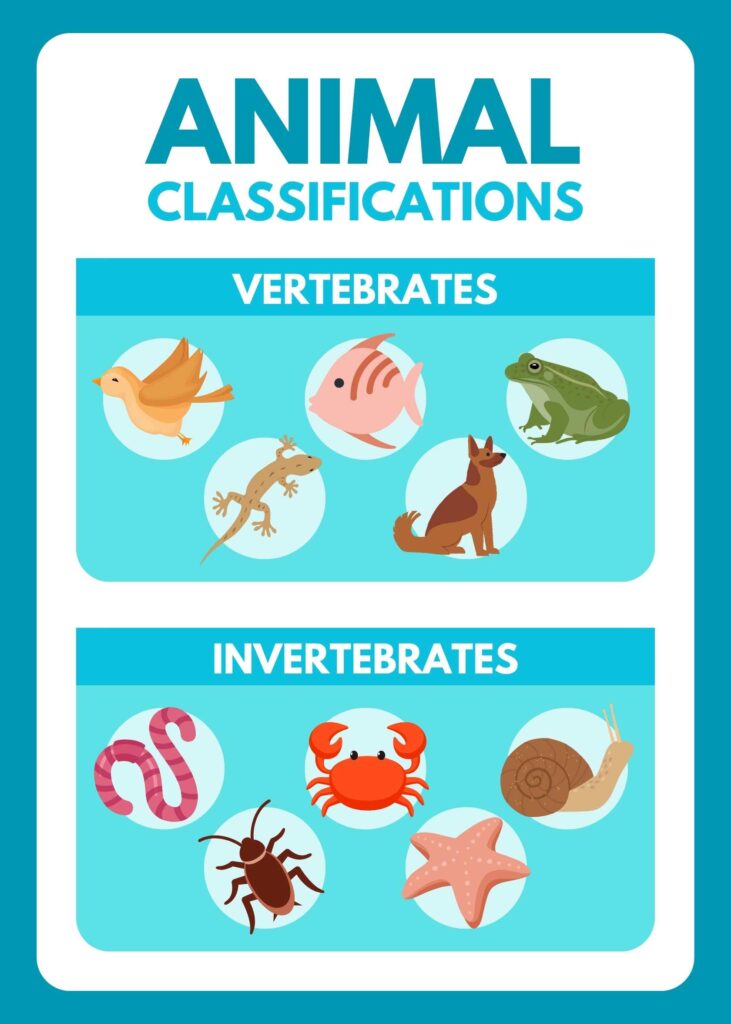CLASSIFICATIONS
Vertebrates and invertebrates are two major groups of animals, distinguished by the presence or absence of a backbone or spine.

Vertebrates:
Definition: Vertebrates are animals that have a backbone or spinal column made of vertebrae. This bony structure provides support to the body and protects the spinal cord.
Examples:
- Mammals: Humans, dogs, cats, elephants, whales.
- Birds: Sparrows, eagles, penguins, owls.
- Reptiles: Snakes, turtles, lizards, crocodiles.
- Amphibians: Frogs, toads, salamanders, newts.
- Fish: Salmon, sharks, goldfish, seahorses.
Key Characteristics:
- Vertebrates typically have a well-developed internal skeleton.
- They possess a closed circulatory system with a heart to pump blood.
- Most vertebrates have a complex nervous system, including a brain.
Invertebrates:
Definition: Invertebrates are animals that do not have a backbone or spinal column. The majority of animal species on Earth are invertebrates.
Examples:
- Arthropods: Insects (e.g., ants, bees, butterflies), arachnids (e.g., spiders, scorpions), crustaceans (e.g., crabs, lobsters).
- Mollusks: Snails, clams, octopuses, squids.
- Annelids: Earthworms, leeches.
- Echinoderms: Starfish, sea urchins, sea cucumbers.
- Cnidarians: Jellyfish, corals, sea anemones.
Key Characteristics:
- Invertebrates lack a backbone, but their body structures can still be quite complex.
- Many invertebrates have an exoskeleton for support and protection.
- Invertebrates can be found in a variety of environments, from the depths of the ocean to the highest mountains.
Summary:
- Vertebrates have a backbone and include familiar animals like mammals, birds, reptiles, amphibians, and fish.
- Invertebrates lack a backbone and constitute a diverse group that includes arthropods, mollusks, annelids, echinoderms, cnidarians, and more.
Understanding the distinction between vertebrates and invertebrates helps in organizing and categorizing the vast diversity of animals on Earth. Each group has its unique characteristics and adaptations that contribute to the success of the species within it.

No responses yet